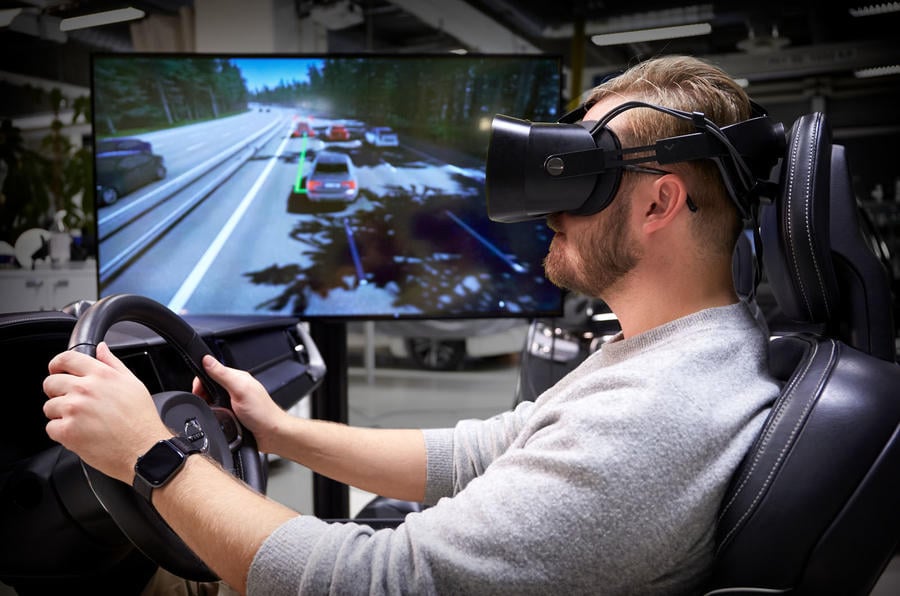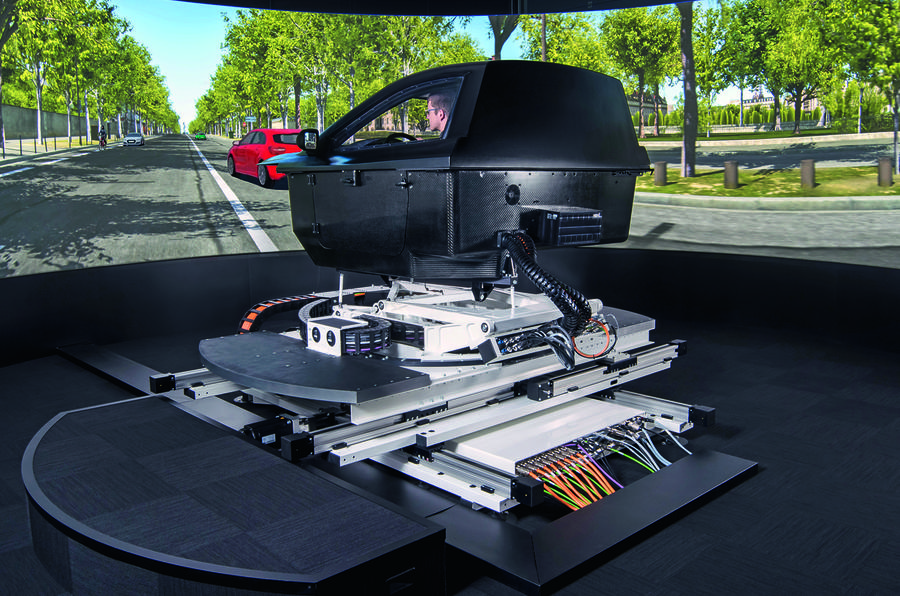Simulator experiments with ADAS are repeatable and avoid adverse influence from weather, traffic or the time of day.
Advanced driver assistance features have been around for well over two decades (if you count the earliest cruise control) and there’s no doubt that the roads are safer for them. But as the list of features, sensors and software grows and complexity increases, making sure there are no glitches that cause more problems than they solve is crucial.
Systems that intervene with driving (braking or steering), like autonomous emergency braking and active lane keeping, are among the most safety critical and there can’t be any circumstances where they lose the plot and do something they shouldn’t. But unfortunately, they sometimes do.
An effective way of sniffing out loopholes in ADAS before they are even fitted to a prototype is by simulation. UK firm Ansible Motion is able to test and validate radar, lidar camera and ultrasonic sensor-based systems in a virtual world to uncover any misunderstanding an ADAS system might have lurking in its sensor technology or, more likely, its software.

A major advantage of simulation is that each part of an ADAS system – including sensors, ECU, control logic, actuators and wiring – can be tested separately, something that’s not possible once physical systems are installed in the car. Accurate digital models of specific sections of road (created using lidar scanners, which generate a near-perfect map of a road and any objects on it, including cattle grids) can be loaded into the simulator. Once the ADAS software is performing flawlessly, the simulation can be validated with real-world test driving on the same section of road with a production-ready version of the car.
As ADAS evolves, the range of objects it can recognise, distinguish between and may need to avoid is increasing. Whereas moving objects were once confined to other vehicles, now systems can detect pedestrians, cyclists, children and animals and the latest addition is a flying duck. The objects are created in digital form by a specialist company for Ansible Motion to incorporate into the simulation.
The simulations include a driver in the loop (DIL), so an engineer does the driving rather than a computer and can verify that the ADAS system has performed as it should. When autonomous emergency braking, stability control or even lane keeping assistance kicks in, it’s important to know how the driver will react to what, for some people, could be a big surprise. The driver also becomes part of the simulation, so other people in the team can assess both the actions of the system and how the driver reacts to them.
Simulation speeds things up in all areas of engineering. As cars get more savvy and autonomous driving edges closer, ensuring ADAS systems are totally predictable and reliable will become more important, as much as anything else, for winning the confidence of drivers using them.
Swarm intelligence
Testing with a ‘swarm’ of vehicles is a way of establishing the ability of autonomous vehicles to cope with other vehicles in close proximity. UK firm AB Dynamics is using software to choreograph eight or more vehicles in simulation. The software can then be ‘cut and pasted’ to a real-world scenario. The firm recently did a swarm test with the Volkswagen Group, where the cars were controlled using VW’s vehicle control robots and wireless telemetry.
Jesse Crosse




